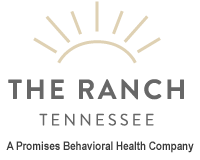In the previous article entitled Co-Depen-DANCE, I introduced the idea that co-dependence is a learned set of ideas and behaviors that center around our relationships with others, as well as with the woman or man in the mirror. It impacts the ways in which we move through life and it has evolved from beliefs that we hold on to that really hold on to us. For many, it emerged as a result of being in close proximity to someone with an addiction; whether it is to a substance like drugs or alcohol, or to a behavior such as shopping, hoarding or experiencing an eating disorder. For others, like myself, it grew out of internalized messages that if I was to feel worthy, I needed to emulate the actions of my caretaker parents and if I was to keep getting all the “goodies,” such as love, attention, affection and approval, then I had better figure out what it took to sustain the flow and shape my behavior around that ideal. Insidious and with predictable patterns, it can take the form of tiptoeing around other people, not rocking the boat, walking on eggshells, being a doormat, or as one of my clients has ruefully shared, wall-to-wall carpet. You may find yourself, or rather, lose yourself second guessing or anticipating someone else’s actions. It can be exhausting and disempowering for all involved. Conflict avoidance and going along to get along are hallmarks of co-dependent relationships. There are other terms that come into play when such dynamics occur: Dependence: relying on someone else as a sole, or at least primary source of support, to the exclusion of self- efficacy. Seeking external validation on a consistent basis, rather than looking within to mine strengths. Interdependence: a healthy sense of trust in yourself and the people around you. A mutuality which allows both parties to be at their best; a flow of reciprocal giving and receiving. Amanda Owen, author of Born To Receive: 7 Powerful Steps Women Can Take Today to Reclaim Their Half of The Universe, sets the stage by defining the language we use to describe what she considers personal power; that of a balance between the two states. Receive: to accept willingly Receptive: ready or willing to receive Receptivity: a willingness or readiness to receive Reciprocity: a mode of exchange in which transactions take place between individuals who are symmetrically placed, i.e.: they are exchanging as equals, neither being in a dominant position Boundaries: those invisible borders that help you maintain autonomy and personal sovereignty, as well as the freedom to say yes to what you want and no to what you don’t want, regardless of the opinions or expectations of others. Enmeshment: lack of awareness or adherence to the idea that as emotionally intimate or bonded as you might feel to another person, you are still separate and unique individuals. There is an exercise that I share while teaching on the subject. I have each person pick a partner and hand each one a slip of paper. One says “Lean on me.” The other says “Joined at the hip.” They then take turns acting those instructions out, interpreting them as they will. It is telling to observe that they know exactly what those concepts mean in theory, but aren’t always able to put them into action. These are examples of co-dependent behaviors. Ask yourself if you are the “leaner” or the one being leaned on. You may take great pleasure in being the rock onto which others can rely upon to lean. The truth is, rocks crumble. If you are joined at the hip with another person, then where he or she leads, you are inclined to follow or vice versa. When that occurs, neither is free to go their own way, even if just for a short time. Enabling: someone who plays the role of enabler allows, supports and maintains the fertile ground for dysfunctional behavior to continue. An example might be someone who is the DD (designated driver) for a family member or friend who consistently drinks too much. Certainly drinking and driving is unacceptable, but by repeatedly getting into the literal driver’s seat, it allows the one who is overindulging to be in the symbolic driver’s seat in the relationship. Healthy boundaries look like the Kahlil Gibran quote: “Let there be spaces in your togetherness, and let the winds of the heavens dance between you. Love one another but make not a bond of love: Let it rather be a moving sea between the shores of your souls.” Take a look at your own relationships, particularly those with your immediate family or close friends. Can you speak your mind, express yourself openly, without fear that you will be misunderstood or ignored? Are you able to ask for needs to be met, or are you the “need meter”? And if you do ask, is it only for things that you believe the other person will be a yes to?
An Exercise in Learning to Say No
Here is an exercise to practice. It is about learning to hear the word no, without believing your life will come to a crashing halt if someone says it to you. Sit with another person and make outrageous requests such as “Will you drive me cross country and pay for food, gas, lodging and tolls, listening only to the kind of music I like?” Chances are, he or she will say no. Then ask a question that they may say yes or no to, such as “Will you loan me $100, until my next payday?” Which feels riskier? Use this as practice for more meaningful interactions. Create a dialog in your mind with someone with whom you have been doing the co-depen-DANCE. Play out a typical scenario, except this time, practice assertive communication, asking for what you need, saying no when called for and yes to what you would like to experience with them. For most people, there is a comfort in the familiar, even if it is dysfunctional or limiting. Are you willing to be comfortable with being uncomfortable? Healing through co-dependent patterns is an exercise in stretching a bit beyond the familiar; or as is said in yoga, “going to your edge.” On the other side of that lies freedom.


